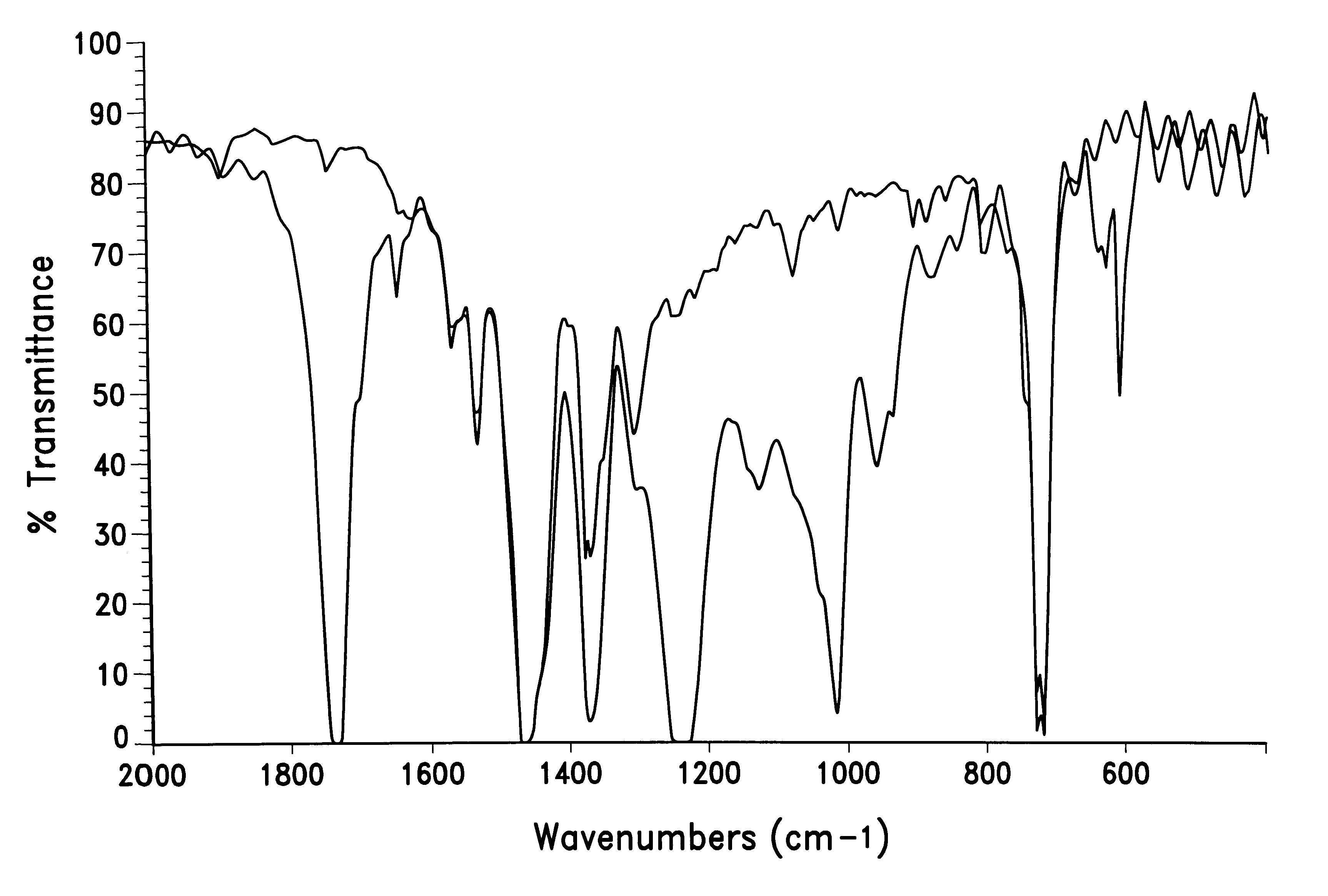Noxious weed control by soil solarization
a technology of soil solarization and weed control, which is applied in the direction of weed killers, horticulture, agriculture, etc., can solve the problems of large soil solarization energy loss, soil solarization is less valuable in not providing the desired temperature, damage or killing of weeds and other plant pests,
- Summary
- Abstract
- Description
- Claims
- Application Information
AI Technical Summary
Benefits of technology
Problems solved by technology
Method used
Image
Examples
Embodiment Construction
AND RESULTS
With reference to FIG. 1, the relative degree of IR absorption (retention) is measured by comparing the areas under the transmission spectra over the two wavelength-regions, 7-14 mm (1450 cm.sup.-1 -700 cm.sup.-1) and also by the winder range 6-25 mm (1700 cm.sup.-1 -400 cm.sup.-1. The percentage of area is the integrated area between the transmission curve and base line and between the specific frequencies (or wavelengths) compared to complete transmission, which area is taken as 100%. Larger values mean greater transmission. Smaller values mean greater IR retention. The IR transmission curve is developed by a dispersive IR instrument or an FTIR instrument which also integrates the area under the specific portions of the curve. Alternately, if a particular instrument is not equipped for integration of the area under the curve the same may be accomplished manually in the traditional way of totalling column heights of stated interval widths. Polyethylene films with an IR a...
PUM
 Login to View More
Login to View More Abstract
Description
Claims
Application Information
 Login to View More
Login to View More - R&D
- Intellectual Property
- Life Sciences
- Materials
- Tech Scout
- Unparalleled Data Quality
- Higher Quality Content
- 60% Fewer Hallucinations
Browse by: Latest US Patents, China's latest patents, Technical Efficacy Thesaurus, Application Domain, Technology Topic, Popular Technical Reports.
© 2025 PatSnap. All rights reserved.Legal|Privacy policy|Modern Slavery Act Transparency Statement|Sitemap|About US| Contact US: help@patsnap.com


